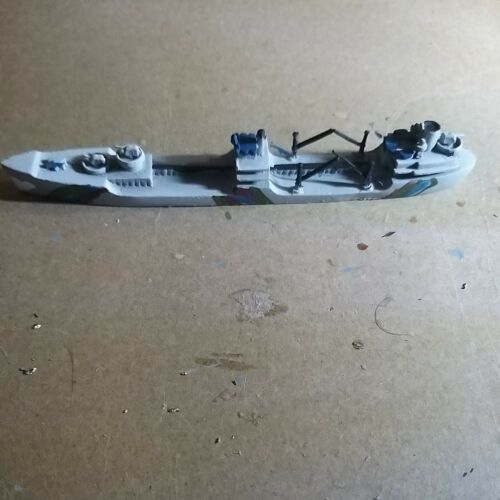-40%
AO Cimmorans Us Fleet Oilers
$ 12.64
- Description
- Size Guide
Description
Cimarron-class oilerswere an
underway replenishment
class of oil tankers which were first built in 1939 as "National Defense Tankers,"
United States Maritime Commission
Type
T3-S2-A1
, designed "to conform to the approved characteristics for naval auxiliaries in speed, radius and structural strength", anticipating their militarization in the event of war. "Tentative plans had been reached with the Standard Oil Company of New Jersey to build ten high-speed tankers with the government paying the cost of the larger engines needed for increased speed. By the first week in December [1937], Standard Oil had solicited and received bids from a number of yards providing for the construction of a number of 16,300-ton (deadweight) capacity tankers. Bids were requested for two versions: a single-screw design of 13 knots and a twin-screw design of 18 knots. The price difference between the two would be used to establish the government's cost subsidy for greater speed. Plans and specifications for both designs were prepared for Standard Oil by naval architect E. L. Stewart. It seems certain that the design for the 18-knot tanker (Standard Oil Co. of New Jersey Design No. 652 NDF) evolved out of the bureau's (
C&R
) design for a fleet oiler."
[1]
USS Cimarron (AO-22)
, lead ship of the class in February 1942
Class overviewNameCimarron classOperators
United States Navy
Succeeded by
Wichita class
Subclasses
Ashtabula class
Mispillon class
Built1938–1945In commission1939–1992Completed35, later 4 converted to
escort carriers
Lost2Retired29General characteristicsClass and typeCimarron-class oilerDisplacement
7,470 long tons (7,590 t) light
24,830 long tons (25,228 t) full load
Length553 ft (169 m)Beam75 ft (23 m)Draft32 ft 4 in (9.86 m)PropulsionGeared turbines, twin screws, 13,500 shp (10,067 kW)Speed18
knots
(21 mph; 33 km/h)Range12,100 nmi (22,400 km; 13,900 mi)Capacity146,000 barrels (23,200 m
3
)Complement304Armament
AO-22 through 33:
4 ×
5"/38 caliber guns
4 × twin
40 mm
gun mounts
4 × twin
20 mm
gun mounts
AO-51 and later:
1 ×
5"/38 caliber gun
4 ×
3"/50 caliber guns
4 × twin 40 mm gun mounts
4 × twin 20 mm gun mounts
General characteristicsClass and type
Ashtabula-class oiler
(Jumboized Cimarron)Displacement
12,840 tons (light);
33,987 tons (full load)
Length644 ft (196 m)Beam75 ft (23 m)Draft34 ft 9 in (10.59 m)Installed power13,500 hp (10,100 kW)Propulsiongeared turbines, four boilers, twin screwsSpeed16 knots (30 km/h)Capacity180,000 barrels (29,000 m
3
) of
fuel oil
Complement304 (as USS)Crew108 civilians plus U.S. Navy detachment (as USNS)Notes"Jumboization" involved the lengthening of the hull and installation of additional cargo capacity during 1965–66
Three of the original twelve ships were commissioned directly into the Navy at launch in 1939; the remainder entered merchant service with Standard Oil of New Jersey and Keystone Tankships before being acquired under the
Two-Ocean Navy Act
of July 1940. A further eighteen were built for the Navy between 1943 and 1946, with five additional units, sometimes called the Mispillion class, built to the slightly larger Type T3-S2-A3 design.
Four of the Cimarrons were converted to
escort carriers
in 1942; two others were sunk by enemy action.


















